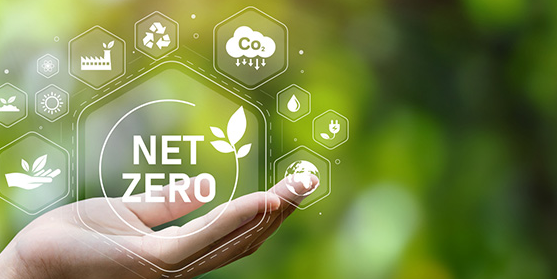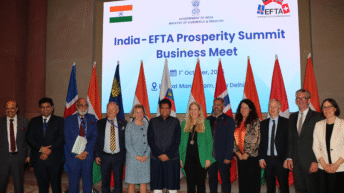
In November 2021, India made a historic announcement at the COP26 summit: it would achieve net-zero carbon emissions by 2070. At first glance, this seems purely an environmental goal – an ambitious step in global climate action. Still, it also intersects with an equally pressing socio-economic challenge: India’s unemployment crisis, especially among its youth. With nearly one in four young Indians unemployed or underemployed, the nation stands at a crossroads. (World Bank Open Data, 2023)
According to the International Labor Organization (ILO), India will need to create nearly 90 million new jobs by 2030 to accommodate its expanding workforce. Meanwhile, the International Renewable Energy Agency (IRENA) forecasts that renewable energy alone could generate over 50 million green jobs in India by 2047. The question is: can India’s climate commitments catalyse job creation? The shift to a green economy could offer not only cleaner air, healthier water, and fertile soil but also millions of new livelihoods.
India, with a median age of 28.2, is one of the youngest countries in the world, highlighting the nation’s need for future-ready jobs. (ESCAP, 2022). According to the World Bank’s 2024 data, India’s literacy rate exceeds 70%, yet the overall unemployment rate remains at 4.2%, with youth unemployment reaching a staggering 23.5%. (The World Bank, 2023). Rural underemployment is a widespread issue, with many stuck in low-productivity agricultural jobs.
Meanwhile, in urban areas, graduates often face a mismatch between their skills and industry demand. These figures highlight a significant risk of a large, frustrated youth population that could negatively affect the country’s growth and stability. Therefore, India needs an employment-led growth model that not only boosts GDP but also creates inclusive and sustainable employment opportunities.
Achieving net zero will require enormous investment—projected to exceed $10 trillion by 2070 for renewable energy, infrastructure, and green technologies. The government has already launched several significant initiatives, including the National Solar Mission, the Green Hydrogen Mission, and the Electric Vehicle (EV) Adoption Schemes. These programmes demand not only capital but also skilled labour, creating opportunities for an employment-driven climate transition. The shift to green energy promises a sectoral transformation.
The ILO-PAGE report projects that by 2030, India could generate up to 10 million jobs in EV manufacturing alone, renewable energy could generate 3.5 million jobs, and green construction could add about 8.8 million jobs. EV manufacturing could add up to 10 million direct jobs by 2035. The total number of jobs to be created is estimated to be around 54 million.
Beyond just projections, the IRENA Report of 2024 shows the current green employment in India. India had an estimated 1.02 million renewable energy jobs. Hydropower, with around 453,000 jobs, was the largest employer, followed by solar PV with 318,600 people. Other sectors, such as biofuel jobs and wind power jobs, also contributed to the significant number. (Renewable Energy and Jobs Annual Review 2024)
Additionally, the government has also taken concrete steps to ensure that the green transition translates into inclusive growth of the country. Initiatives in states like Bihar, Rajasthan, and Gujarat highlight this potential. Bihar’s ‘Solar Didis’ training programs are not only focused on expanding renewable capacity but also creating entry-level jobs for women to enter the workforce. Rajasthan’s PM-KUSUM scheme is centred around de-dieselisation of the farm sector and increasing the income of farmers using subsidies. Similarly, Gujarat’s rooftop solar expansion and farmer-focused ‘Suryashakti Yojana’ are helping reduce regional disparities by generating steady incomes and spreading the green jobs beyond major urban cities. If these schemes are successful, India has the potential to achieve its net-zero commitments faster while creating millions of direct and indirect jobs.
This potential, however, comes with many structural challenges. Estimates suggest that states that heavily depend on fossil fuel energy, such as Jharkhand, Chhattisgarh, and Odisha, will see a decline of nearly 110,000 jobs in coal- and coal-dependent sectors by 2030. With over 70% of coal workers employed informally, these states face the risk of being caught in the vicious cycle of structural unemployment. This structural unemployment would only prevail without a just transition. Another challenge is the skill mismatch between the current workforce and the required workforce. Less than 3%of India’s workforce is formally skilled (World Bank, 2017). This means that the majority of India’s workforce is unprepared to face the emerging technical demands of transitioning into a green economy. Unless India invests in skilling and reskilling the workforce, especially in rural and coal-dependent regions, the workforce risks being left behind even as opportunities emerge. Another critical barrier is the lack of women’s participation in the green workforce. Globally, women make up about 32% of the green workforce, but that number is merely 11% in India (IEA, 2019). While this number has been steadily increasing over the years, it is still not nearly enough. Without active policies to integrate women into the new workforce, the green economy may continue to exclude half of its potential employees.
Therefore, a fair transition framework that guarantees no community is left behind must guide policy. The policy recommendations should include incentivising green industries with tax breaks and subsidies linked to job creation, reskilling coal sector workers, investing in rural green infrastructure to reduce the urban-rural divide, expanding public-private partnerships to attract investment and training, and monitoring job creation metrics alongside carbon reductions for accountability.
Conclusion:
India faces a choice: it can either let Net Zero remain merely a climate obligation on paper or transform it into a blueprint for inclusive, job-led growth. This decision will shape not only 2070 but also the livelihoods of millions in the years to come. Net Zero 2070 has the potential to significantly reduce unemployment in India by generating not only jobs but also creating sustainable, future-ready employment that fosters inclusive economic growth. This employment-led growth model could create around 55 million jobs while modernising the economy. The initiative presents a dual opportunity to address both climate change and India’s unemployment issue.
Climate policy is not separate from development; it drives it.
America, O. (2024). ORF America. [online] ORF America. Available at: https://orfamerica.org/orf-america-comments/india-energy-transition-jobs.
data.worldbank.org. (2024). Literacy rate, adult total (% of people ages 15 and above) – India | Data. [online] Available at: https://data.worldbank.org/indicator/
ESCAP (2022). India | Demographic Changes. [online] www.population-trends-asiapacific.org. Available at: https://www.population-trends-asiapacific.org/data/IND.
Goyal, K. (2025). From Dreams to Reality: Solar Didis Redefine Solarpreneurship. [online] Renewable Affairs. Available at: https://renewableaffairs.com/news/dreams-to-reality-solar-didis-redefine-solarpreneurship/
IEA. (2019). Women working in the rooftop solar sector – Analysis. [online] Available at: https://www.iea.org/reports/women-working-in-the-rooftop-solar-sector.
India.gov.in. (2024). PM Surya Ghar – Muft Bijli Yojana| National Portal of India. [online] Available at: https://www.india.gov.in/spotlight/pm-surya-ghar-muft-bijli-yojana.
Mnre.gov.in. (2024). National Portal for PM-KUSUM. [online] Available at: https://pmkusum.mnre.gov.in/#/landing#about-scheme
PAGE 2023, Assessment of India’s Green Jobs and Just Transition Policy Readiness
Renewable Energy and Jobs Annual Review 2024. (n.d.). Available at: https://www.irena.org/-/media/Files/IRENA/Agency/Publication/2024/Oct/IRENA_Renewable_energy_and_jobs_2024.pdf.
The World Bank (2023). Unemployment, Total (% of Total Labor force) (modeled ILO estimate) – India | Data. [online] data.worldbank.org. Available at: https://data.worldbank.org/indicator
World Bank Open Data. (n.d.). World Bank Open Data. [online] Available at: https://data.worldbank.org/indicator/
World Bank. (2017). Skilling India. [online] Available at: https://www.worldbank.org/en/news/feature/2017/06/23/skilling-india.






Add comment